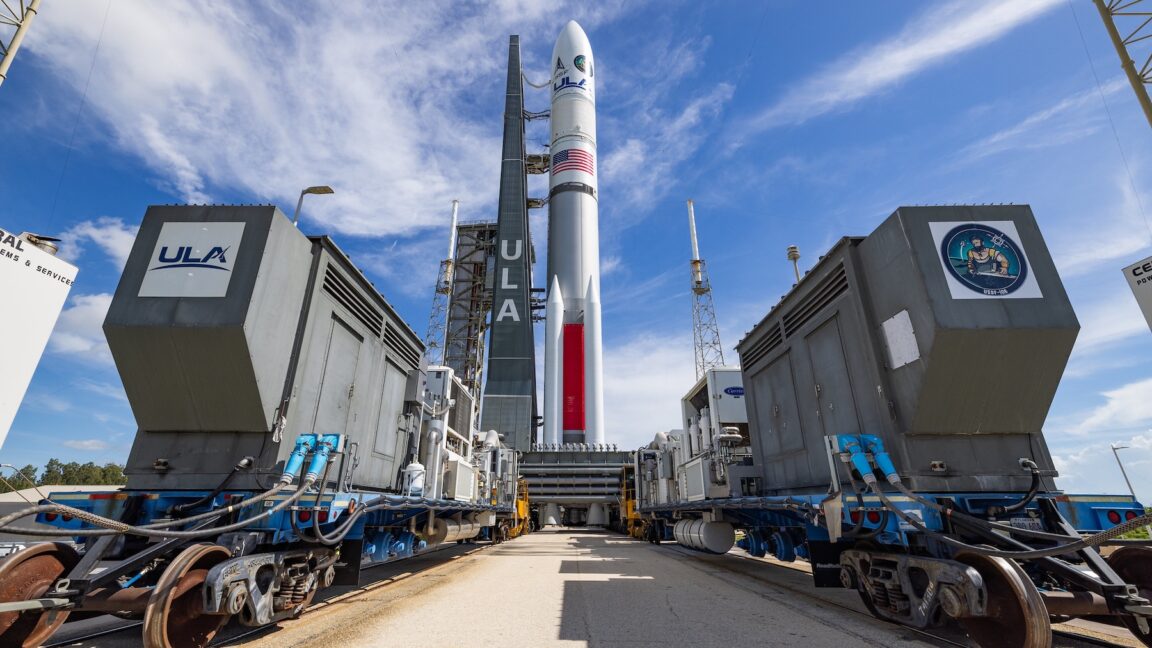Science
US Space Force Launches Vulcan Rocket for National Security Mission

The US Space Force is set to launch the Vulcan rocket, developed by the United Launch Alliance (ULA), on March 26, 2024. This mission marks a significant milestone, as it will carry a military navigation satellite into geosynchronous orbit, positioned over 22,000 miles (approximately 36,000 kilometers) above the equator. The launch will commence from Cape Canaveral Space Force Station in Florida at 7:59 PM EDT (23:59 UTC).
With an 80 percent chance of favorable weather, this launch is the culmination of over a decade of development and testing. ULA’s Vulcan rocket has undergone extensive evaluation, including two demonstration flights in 2024, which were essential for the Space Force to declare it operational. The upcoming launch will not only deploy the experimental Navigation Technology Satellite-3 (NTS-3) but also a series of undisclosed payloads hidden within the rocket’s nose cone.
Preparations and Capabilities
The NTS-3 satellite, valued at $250 million, aims to test innovative navigation technologies intended for future GPS systems. It will focus on mitigating issues such as GPS jamming and spoofing, which pose risks to military and civilian navigation. According to Joanna Hinks, a senior research aerospace engineer at the Air Force Research Laboratory, the mission will involve over 100 experiments, including the use of an electronically steerable phased array antenna to enhance signal delivery.
The Vulcan rocket incorporates advanced features, including four solid rocket boosters from Northrop Grumman, which are designed to improve launch performance. This is a shift from the previous configurations that utilized two strap-on boosters. Despite a nozzle failure during one of its test flights, which did not compromise the vehicle’s overall success, engineers have identified and addressed the issue, ensuring that the Vulcan is ready for its operational debut.
Strategic Implications and Future Plans
The Space Force’s choice to utilize the Vulcan rocket underscores a strategic shift away from reliance on foreign technology, specifically Russian-built engines. As tensions between the US and Russia have escalated, the desire to maintain national security through domestically sourced technology has intensified. Colonel Jim Horne, mission director for the USSF-106 launch, emphasized the significance of this launch in the context of ensuring reliable access to space with multiple service providers.
The Vulcan rocket is not only a vital asset for the Space Force but also for commercial clients, with more than 70 launches already contracted. Major clients include Amazon and various government entities, highlighting the rocket’s broad appeal. While ULA aims to enhance its competitive edge against SpaceX, which currently leads in military launch contracts, the Vulcan’s performance in this mission will be critical in solidifying its position in the market.
As the launch approaches, the Space Force remains tight-lipped about the specifics of the additional payloads aboard the Vulcan rocket. This level of secrecy marks a departure from previous military practices, where details about payloads were often disclosed. The decision to keep information under wraps suggests a growing emphasis on operational security.
The launch of the Vulcan rocket represents a pivotal moment for the US Space Force, reflecting advancements in technology, strategic independence, and a commitment to ensuring national security in an increasingly complex global landscape.
-

 World5 months ago
World5 months agoSBI Announces QIP Floor Price at ₹811.05 Per Share
-

 Lifestyle5 months ago
Lifestyle5 months agoCept Unveils ₹3.1 Crore Urban Mobility Plan for Sustainable Growth
-

 Science4 months ago
Science4 months agoNew Blood Group Discovered in South Indian Woman at Rotary Centre
-

 World5 months ago
World5 months agoTorrential Rains Cause Flash Flooding in New York and New Jersey
-

 Top Stories5 months ago
Top Stories5 months agoKonkani Cultural Organisation to Host Pearl Jubilee in Abu Dhabi
-

 Sports4 months ago
Sports4 months agoBroad Advocates for Bowling Change Ahead of Final Test Against India
-

 Science5 months ago
Science5 months agoNothing Headphone 1 Review: A Bold Contender in Audio Design
-

 Top Stories5 months ago
Top Stories5 months agoAir India Crash Investigation Highlights Boeing Fuel Switch Concerns
-

 Business5 months ago
Business5 months agoIndian Stock Market Rebounds: Sensex and Nifty Rise After Four-Day Decline
-

 Sports4 months ago
Sports4 months agoCristian Totti Retires at 19: Pressure of Fame Takes Toll
-

 Politics5 months ago
Politics5 months agoAbandoned Doberman Finds New Home After Journey to Prague
-

 Top Stories5 months ago
Top Stories5 months agoPatna Bank Manager Abhishek Varun Found Dead in Well









